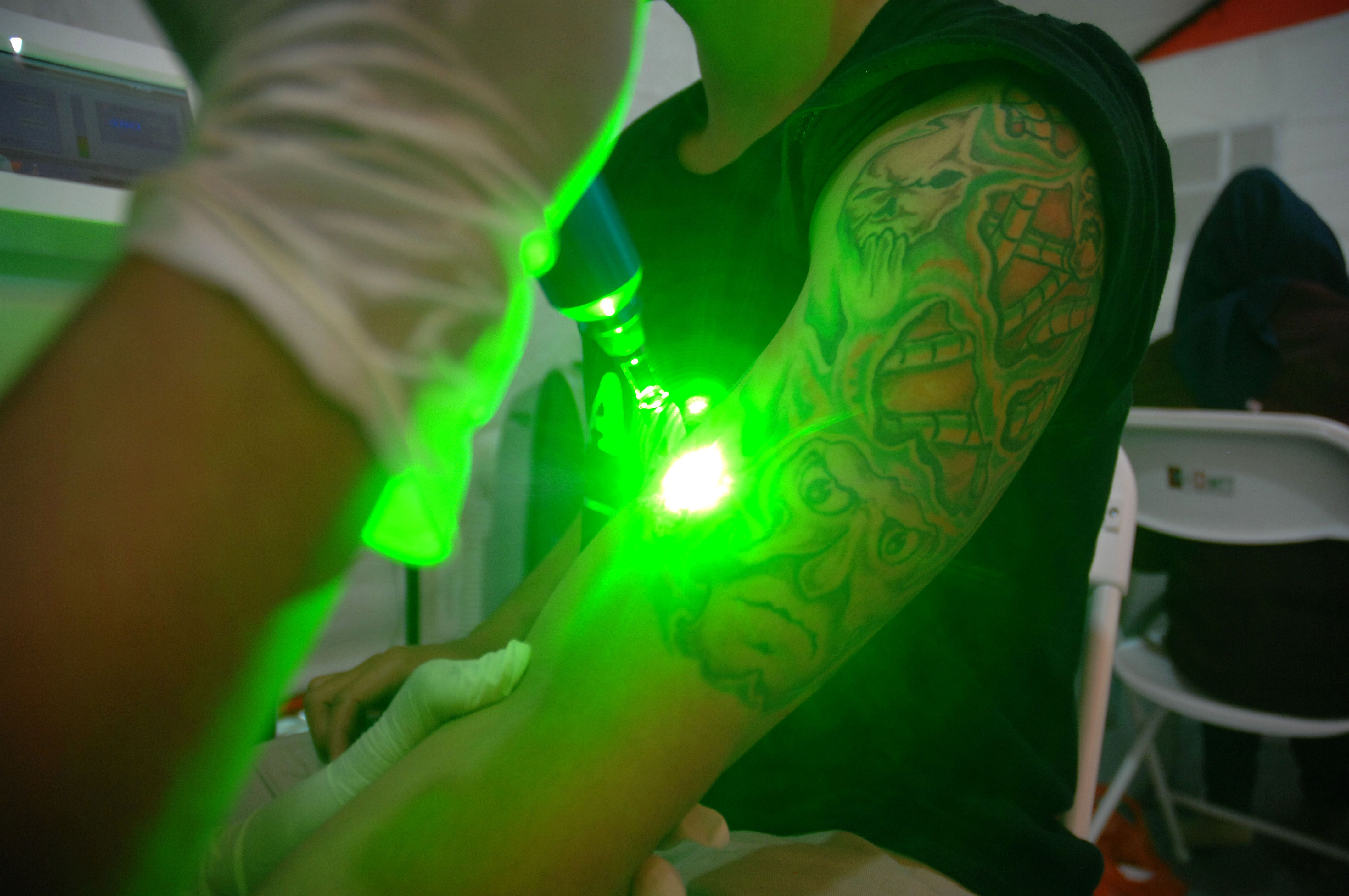

Tired of your old tattoo? Laser tattoo removal offers a safe and effective way to erase unwanted ink. But navigating the world of lasers can be confusing. This guide breaks down the common types of laser technology used for tattoo removal, helping you make an informed decision:
1. Q-Switched Lasers:
The most popular type, Q-Switched lasers emit high-energy pulses of light that target the tattoo pigment. The light is absorbed by the ink, breaking it down into smaller particles that are then eliminated by your body's natural processes.
Types:
Nd:YAG: Effective on dark inks, including black, blue, and green.
Alexandrite: Best for red and yellow inks.
Picosecond Lasers: A newer technology that delivers even shorter, more powerful pulses, potentially leading to faster removal and less scarring.
2. Fractional Laser:
This technique uses a laser to create small, controlled wounds in the skin, stimulating collagen production. While it doesn't directly target the ink, it can help break down the tattoo's structure and make it less visible, particularly for older, faded tattoos.
3. Other Emerging Technologies:
Plasma Ablation: This non-laser technique uses a plasma beam to remove tattoo pigment, potentially causing less scarring than traditional lasers.
Photoacoustic Tattoo Removal: This method uses sound waves to break down tattoo ink. It is still in early development but shows promise.
Choosing the Right Technique:
The best laser for you depends on various factors, including:
Ink colors: Different lasers are more effective at targeting specific colors.
Tattoo depth: Deeper tattoos require more treatments.
Skin type: Your skin tone and sensitivity can influence treatment options.
Important Considerations:
Find a qualified professional: Choose a board-certified dermatologist or plastic surgeon with experience in laser tattoo removal.
Multiple treatments are required: It usually takes several sessions to fully remove a tattoo, with spacing of several weeks between treatments.
Potential side effects: These include redness, swelling, blistering, and scarring.
Laser tattoo removal is a complex process that requires careful planning and expert execution. Consulting with a qualified professional can help you understand the various techniques and make the best decision for your specific needs.



0 comments:
Post a Comment
Note: Only a member of this blog may post a comment.